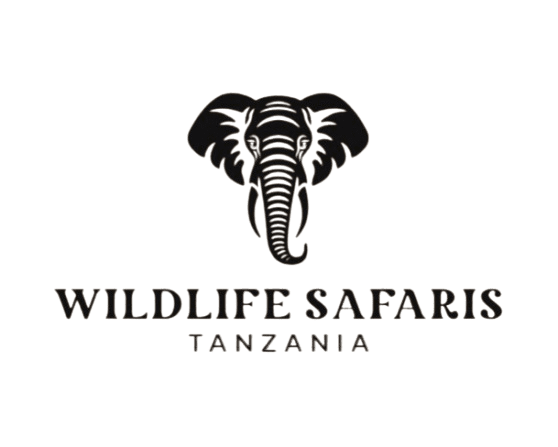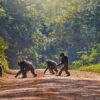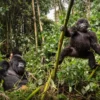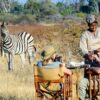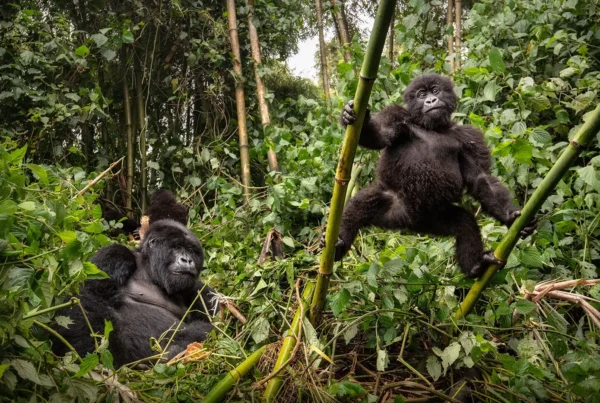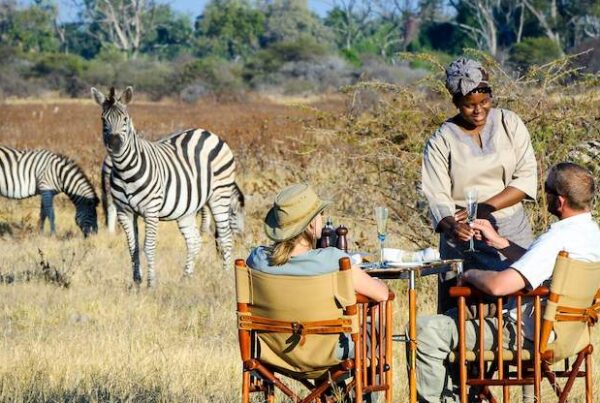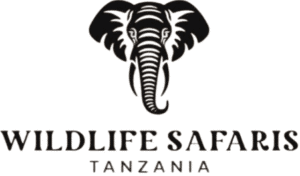Explore the Southern Circuit of Tanzania
The South gets a fraction of the tourists since the North is always in the spotlight. But it doesn’t imply there aren’t plenty of places to go and enjoy the games. The fauna on this circuit is completely unspoiled. Guests looking for seclusion and closeness are our specialty when it comes to taking them on this safari circuit.
Important Points from the Southern Race
The sanctuary of Nyerere.
Want to go someplace isolated where you can see animals up close? In the further south, you’ll find Nyerere National Park; why not go there? This area has Tanzania’s most diversified wildlife and is a great substitute for the Serengeti. With an area of over 30,893 km², the Nyerere (Selous) National Park is the biggest in Tanzania. Rare creatures such as the African wild dog, roan, and sable antelope may be an exciting experience, even when there is no wildebeest migration.
Just over two hundred and thirty kilometers from Dar es Salaam is the vast and animal-rich Nyerere. From this commercial hub, it’s only a 45-minute flight to either Mtemere or Sumbazi Airstrip, which is why so many people adore it. Do you enjoy being behind the wheel? After that, you may reach this stunning park after driving for eight hours. On the other hand, the renowned TAZARA train is an option.
Very few people ever make it to the Nyerere. Because of this, adventurers come here to enjoy private game drives without going into debt. My question is, why? Those on a tighter budget won’t be able to afford private drives in the North. Big herds of elephants, lions, giraffes, leopards, gazelles, zebras, and wildebeests are common sights along the road.
Not only does Nyerere provide the usual safari fare, but it also offers some extras. An evening spent gliding along the Rufiji River is possible. On this excursion, you’ll get up close and personal with crocodiles, hippos, and a plethora of river birds. In addition, the park has intimate campsites where visitors may enjoy some peace and quiet. Families, couples, honeymooners, and those seeking seclusion are our top recommendations.
National Park Ruaha.
Ruaha is the greatest spot to see unspoiled, wild beauty since it is still secluded and rough. Approximately 10% of Africa’s lions and the country’s greatest number of elephants are located in Ruaha. This area, which is home to secluded wildness not seen in the northern part of Tanzania, is the second biggest park in Tanzania.
The fact that you can drive all day in Ruaha and not see another car is one of our favorite things about the area. Those concentration camps? Nestled in the heart of the African bush, Ruaha is home to exclusive campgrounds that provide seclusion, luxury, and solitude. Sleeping beneath the stars in the African wilderness is an option at certain places. You’re going fly camping.
While on a wildlife drive, keep an eye out for elephants at the watering holes along the Ruaha River. The interior of a baobab tree is a good source of water for these gray giants. A boat trip along the riverbanks is another great way to see wildlife, such as crocodiles, hippos, giraffes, elephants, and wildebeest. Those who are really interested might embark on a night drive in search of creatures that are active only at night.
A plane is your best bet for getting to Ruaha. You may fly from Ruaha to Arusha, Dar es Salaam, or Zanzibar with any number of airlines. And other places like Nyerere, Katavi, Tarangire, and the Serengeti. Alternatively, you might take a road trip from Ruaha to Nyerere National Park.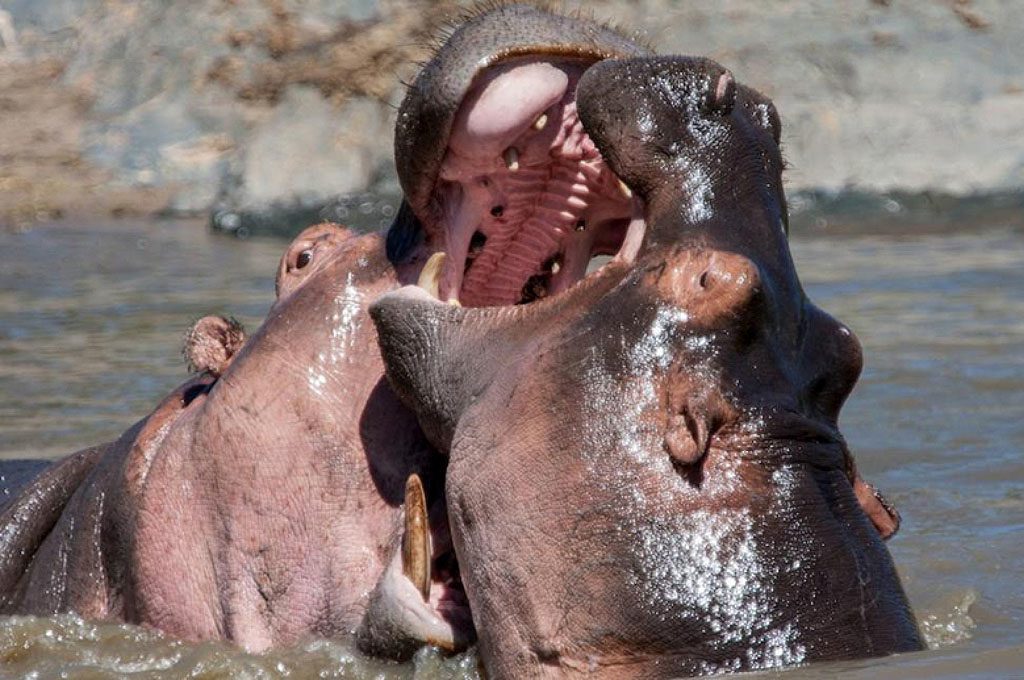
Located in Kitulo National Park.
Kitulo is the southernmost destination with the most isolated location. Situated in the Southern Highlands not far from Mbeya in the deep south is where you’ll find the park. No large mammals such as lions, elephants, buffalo, or giraffes will be found here. Some species call this park home, including zebras, vervet monkeys, reedbuck, eland, and the extremely uncommon Kipunji. You can also find other animals, such as reptiles and butterflies.
People travel to Kitulo to see the flowers, not the animals, at least that’s what we’ve noticed. There are more than 350 kinds of vascular plants in the park, including more than 45 types of orchids. November through May is when the scenery becomes a veritable rainbow of colors. This sets the stage for a photo opportunity that any safari photographer would like.
While first-timers in search of animals may be disappointed, regular visitors should definitely check out Kitulo’s hidden area. The ideal place in Africa for a honeymoon safari is Kitulo, since the newlyweds value privacy and flowers.
The park of Mikumi.
Southeastern Tanzania is home to some of the country’s top attractions, including Mikumi, sometimes known as Little Serengeti. Mikumi boasts vast grasslands and an abundance of animals that may be compared to the genuine Serengeti. Its proximity to Dar es Salaam, the capital of Tanzania, is a major selling point.
The Mkata Plains are home to buffalo, gazelles, wildebeest, zebras, and big prides of lions. Lumango, Rubeho, and Uluguru are home to a variety of birds and monkeys in their lush forests, and giraffes, elephants, and elands populate the woodlands themselves. Its two artificial ponds and streams are home to hippos as well.
National Park of the Udzungwa Mountains.
Many safari-goers often fail to spot this jewel. Extreme mountain climbers and hikers will love this spot. For many years, scientists have used it to study endangered animals, such as the Sanje crested mangabey, Iringa red colobus, Kipunji monkeys, and Udzungwa woodland partridge. Large creatures such as buffalo, leopards, and elephants are also seen.
That is all.
Experiencing a safari in Tanzania is like no other. If you want to avoid the crowds at northern parks, you should go south instead. The inaccessible southern circuit is beyond our capabilities. Get in touch with our safari planners if you need assistance organizing your trip.
